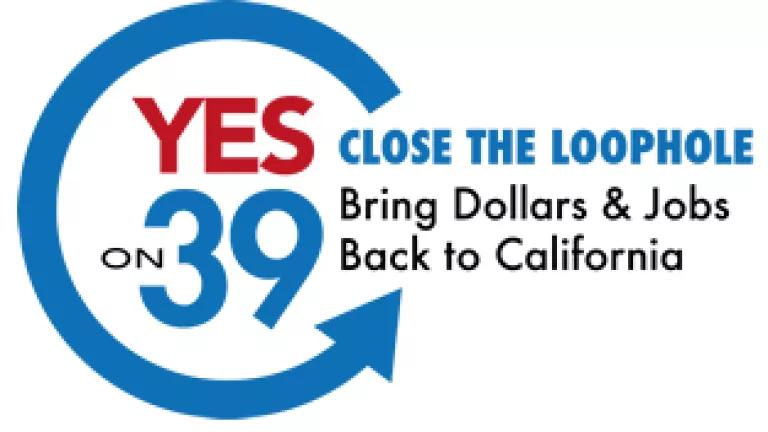
The California Public Utilities Commission (CPUC) today approved an impressive $1 billion for energy-saving programs that will also save money by continuing to help Californians use energy in a smarter way.
The 2015 energy efficiency programs – designed and delivered by utilities, local governments, third-party companies and nonprofits – will save enough energy in California’s homes and businesses to lower energy bills by $200 million after accounting for the cost of the programs, reduce emissions equivalent to more than 100,000 cars, and avoid the need for a medium-sized power plant. These programs are funded by customers of investor-owned utilities that serve nearly three-quarters of the state’s electricity demand. The publicly owned utilities, which serve the rest of California, also offer energy-saving programs to their customers as described in our recent analysis of public power’s progress on efficiency.
The good news
The commission’s action builds on a long record of achievement that has yielded billions in utility bill savings, advanced groundbreaking building codes and appliance standards to cut energy waste, and substantially reduced global-warming pollution while reinvigorating the economy.
The commission also took the unprecedented step of approving an ongoing long-term funding source for efficiency programs benefitting Californians. The utilities are now authorized to sustain the same amount of annual funding in today’s decision until 2025 or until another commission decision supersedes it. This is a great advancement. NRDC has long advocated – along with key partners, such as third-party providers, local governments, and utilities – for the CPUC to take action to remove the “start/stop” nature of efficiency funding, which creates uncertainty in the market, disrupts program implementation, and makes it extremely difficult for a company or non-profit to invest in efficiency and infrastructure beyond the short term. We commend the commission for taking this important step!
Room for improvement
While these programs will yield enormous benefits, the commission unfortunately missed an important opportunity to help cash-strapped schools leverage their Proposition 39 funding to do even more to improve the efficiency of their buildings in the near future.
Proposition 39 was passed by California voter majority in 2012 to close a tax loophole yielding approximately $1 billion a year for California, of which half is dedicated to energy efficiency and clean energy projects in public schools. Schools are able to access this funding by applying to the program administered by the California Energy Commission.
Although a half-billion dollars per year to school clean energy projects is a great win, it unfortunately is not enough to improve the efficiency in California’s 10,000 schools where more than 70 percent of school buildings are over 25 years old. This would be a great opportunity to leverage the efficiency programs to capture even more energy savings than could occur with Proposition 39 funding alone.
However, current practice assumes that schools (and all other buildings) are able to - and will - capture the available savings on their own, either when things break or through a general retrofit. Therefore, per current commission guidance, utilities, implementers, and local government programs can only offer financial and technical support to take those customers to an even greater level of efficiency than they were planning to do on their own. In theory, energy efficiency programs could incentivize customers to replace old systems (like heating, air conditioners, or refrigeration) or upgrade their lighting or building insulation earlier than they would on their own (aka “early retirement” projects). But in practice, this approach doesn’t seem to be working and likely won’t be fully utilized without modification.
Unfortunately, the reality is that Proposition 39 funds alone aren’t sufficient to capture all the savings in these schools. While it may bring parts of a school to high levels of efficiency (e.g., one building or one system), bringing every single system and building up to high levels is not likely without help from other programs, such as those implemented by local governments, third parties, and utilities.
We urge the commission to remove barriers to bringing old and inefficient schools up to modern standards and to determine a clear path that ensures utility funding goes to projects above and beyond what Proposition 39 can fund while making sure that energy savings are real. The decision today took the first step in doing so as it authorizes a few pilot efficiency programs to test how to accelerate the adoption of efficiency in schools. However, we must do much more and on a quicker timeline than the regulatory process often allows. This opportunity is not only critical to capture a huge amount of energy savings, but it will also help cash-strapped schools lower their energy bills while improving the learning conditions for students.
Looking forward
Now that the commission has approved 2015 energy efficiency funding, the next topic is to consider how to design and implement a long-term “rolling portfolio” approach for program planning to replace the current two or three year short-term planning cycles. As nearly 30 parties wrote to Commissioner Mark Ferron just over a year ago, we look forward to working collaboratively with the commission and other stakeholders to establish a robust approach to ongoing program planning and implementation.

Efficiency continues to be California’s cleanest and cheapest way to serve the state’s energy needs because when we optimize our energy use, we don’t need to generate as much of it, which helps avoid the purchase and burning of fossil fuel that also harms our health and the environment. The commission’s unprecedented long-term funding authorization and movement toward implementing a rolling portfolio approach to program planning would help launch California to the next level of achieving substantial energy savings, which will lower the cost of energy for all customers, support a growing efficiency industry, and improve our environment.

